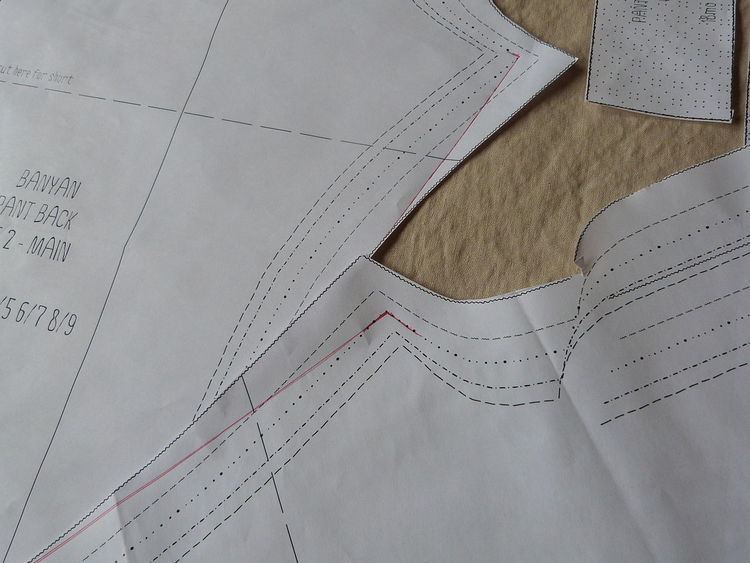 | ||
Pattern grading is the process of turning base size or sample size patterns into additional sizes using a size specification sheet or grading increments. This can be done manually or digitally using computerized pattern cutting software. These increments are referred to as garment grading rules. Each specific clothing market area and level has different grading rules.
Contents
Standard grading rules are given as ergonomic measurements of the body. This can be done online or in pattern grading books. When producing a clothing line, you will need a grading system to target a specific target market.
Grading is a necessary step that must be taken before approaching sample manufacturers or factories, because they require card sets of your specific patterns and an order of garments to be produced. Grading determines how your garments will fit in all sizes. Having a variety of sizes for each of your garments fills out your minimum garment order cost effectively. Grading will not create shape, but will only increase or decrease size of original shape.
Typically, the first pattern is developed in one size and is graded up or down. This sets it to your size standards.
History
Historically, the science of grading went hand-in-hand with the advent of commercial patterns and the mass-production of pattern-built clothing some 150 years ago. To properly fit a pattern to a range of sizes, each piece needed to be graded, meaning systematically increased or decreased.
Early sewing patterns were made to fit a specific individual. One size was created by measuring various parts of the individual's body. The key parts of the individual's body that are measured are the bust, waist, and hip. The pattern pieces are made of the half of the garment piece. Often the patterns cut out of paper. The patterns did not include directions for orienting the pattern pieces on fabric, nor did they identify what part of the garment each piece represented. Re-sizing or grading the pattern was a complicated task for even the most skilled seamstress.
It was not until the 1850s that sewing patterns were made available to a slightly larger, but still affluent, public. American women could obtain a paper pattern custom made by a dressmaker or could purchase a pattern through a women's journal.
The advent of large-scale production of graded, practical and easier to use sewing patterns can be traced to 1867. Ebenezer Butterick mass-produced patterns printed on tissue paper. Patterns were available for purchase in a variety of sizes, one size per package.
It was not until the 1970s, when sales were lagging, that multi-size graded patterns became available.
Methods of Grading
There are three basic methods of pattern grading. These include:
Cut and spread: This is the easiest method, which acts as the basis of the other two methods. To perform this method, you must cut the pattern and spread the pieces by a certain amount to grade up, or overlap the pieces to grade down. The only tools you will need for this method are a pencil, tape, ruler, and scissors.
Pattern shifting: Pattern shifting involves increasing the overall dimensions of a pattern by moving it around at a constant distance. After you move it, you redraw the outline in order to produce the same results as cut-and-spread.
Computer grading: Computer grading is the most recent development in grading technology. It is also the fastest method. Computer grading, however, is expensive and usually only large manufacturers can afford it. Computer grading takes the processes of the two former methods and digitizes them.
There is not a superior method; they are all equally capable of producing a correct garment grade.
